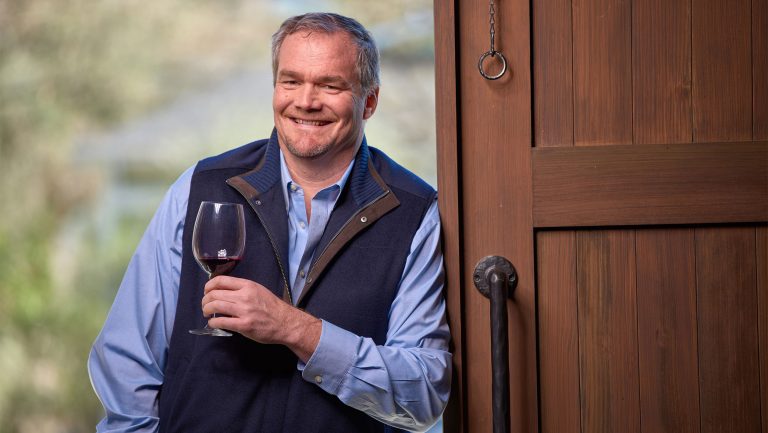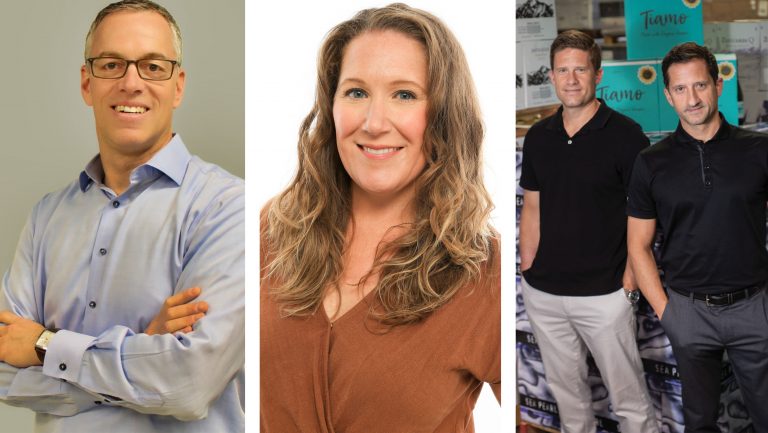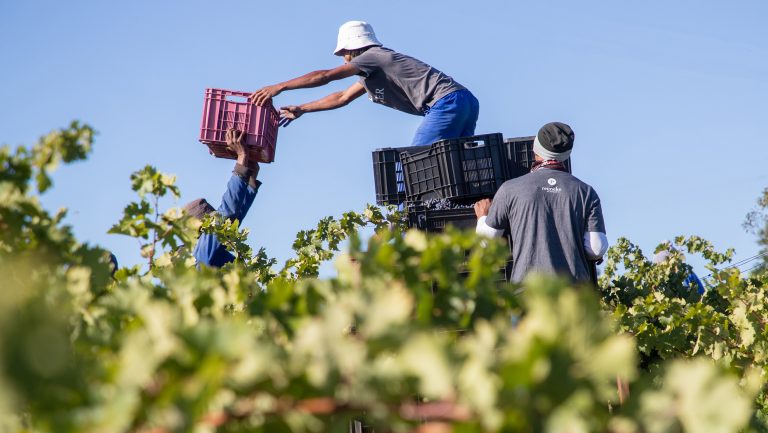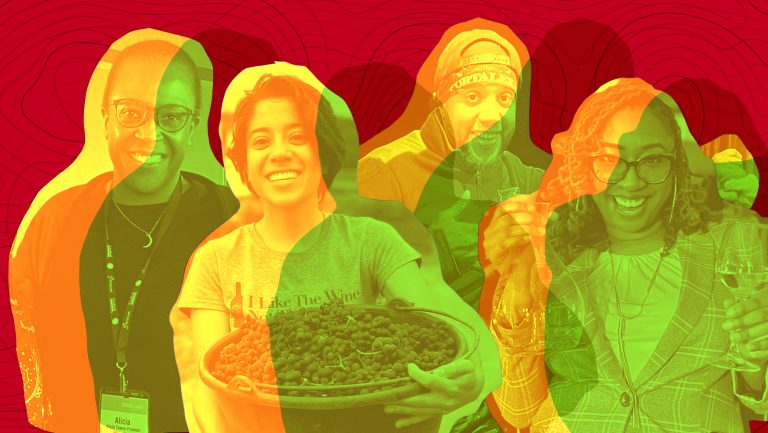The $1.1 billion acquisition of alcohol delivery app Drizly by Uber in February was a high-profile example of how 2020 reshaped the way consumers purchase wine and spirits.
But behind the scenes within the distribution tier, where hundreds of thousands of pallet loads of product are moved through warehouses and trucked across hundreds of miles each day, the changes have been just as significant.
A variety of forces—both serious challenges to the status quo and new opportunities—have converged to push the U.S. alcohol distribution industry into one of its most significant periods of modernization since the three-tier system was created in 1933.

Don’t miss the latest drinks industry news and insights. Sign up for our award-winning newsletters and get insider intel, resources, and trends delivered to your inbox every week.
“Distribution has always been evolving, but this is the biggest change I’ve seen in my 40 years in the business,” says Lloyd Sobel, EVP and chief commercial officer for Breakthru Beverage. “The combination of ecommerce explosion, the pandemic, on-premise shutdowns, and changing restrictions has resulted in huge change for our industry.”
Underserved Brands Demand New Pipelines
Craft brands seeking new distribution channels have created disruption—and opportunity. Long squeezed between DTC restrictions and the challenges of getting picked up by a distributor, small producers became even more acutely aware of the system’s limitations when they had to shut down their tasting rooms during the pandemic.
Yet the pandemic merely accelerated this push for change, believes Kate Palmer, owner of Hearts + Tales Beverage Co. in Vallejo, California, which specializes in helping artisanal brands get to market. “There are so many craft producers popping up in the U.S. and a new system had to be created because they couldn’t all find homes with wholesalers,” she says. Her team—“storytellers with a passion for artisanal, craft brands”—provides smaller brands with specialized sales and marketing services.

“Right now, 3.2 percent of spirits sales are craft, yet research data shows that three in four consumers would prefer to drink craft,” says Josh Jacobs, cofounder and CEO of Speakeasy Co., which facilitates ecommerce sales for craft distillers. “How do we create a distribution environment that gets the consumer the product that they want?”
A three-tier compliant platform, Speakeasy helps producers create customized order pages on their own websites; orders are fulfilled by Speakeasy via local retailers, but the customer never knows the difference. “This provides a seamless front-end experience for consumers, while handling the backend for brands,” explains Jacobs. By managing warehousing, fulfillment, and technology for suppliers, they are freed up to “focus on growth by owning the data and building customer relationships.”
Speakeasy enabled Bryan Avery, the sales and marketing manager for Horse Soldier Bourbon in St. Petersburg, Florida, to reach a national audience—and provided sales data that allowed him to determine which states to pursue for in-state distribution. “We can look at a map of the U.S. and see the hot spots with strong sales—states where we might want to go on the ground.”
Another example is Spirit Hub, an independent distillery-focused ecommerce platform founded in 2017 and now delivering to Illinois, Nebraska, New Hampshire, North Dakota, and soon Washington D.C. Founder and CEO Michael Weiss says Spirit Hub is also working on an omnichannel solution that will give their suppliers a national footprint: Customers will order on Spirit Hub and then have curbside pick-up at one of many national retailers that Weiss is working with.

The Wine Industry Rethinks Route to Market
Small wineries are also desperate for new ways to reach consumers. “There is huge frustration that’s been building pre-pandemic on the part of small wine producers, as wholesalers focus on larger suppliers,” says Jean Hoefliger, winemaker and principal of JH Wine Consulting. “When the pandemic hit, those with a strong DTC base could survive, but those who didn’t had an incredibly difficult time. Virtual very quickly became the hot new sales channel.”
Many of Hoefliger’s clients turned to companies like Priority Wine Pass, which hosts virtual tastings and facilitates DTC sales. “This allows wineries to control their own destiny by eliminating the distributor and gaining brand exposure and generating sales,” says Hoefliger. (It only works for small producers, he adds: “If you produce more than 30,000 cases, you really need a national distributor.”)
Vivino has seen incredible recent success in connecting wineries directly with consumers. Acting as a marketplace, Vivino partners with retailers throughout the country to fulfill orders. They manage the consumer experience and have posted a 100 percent growth rate for the last seven years—in 2020, they sold more than $265 million worth of wine.
Small importers are also seeking out new distribution solutions to simplify their route to market, particularly as they seek to expand, and a number of new logistics providers have emerged. Elenteny Imports provides distribution services in some states which allow importers and producers to sell direct to accounts; in other states they provide logistics and freight-forwarding services and work with a licensed distributor.
“We’re in 30 different states now, each with its own restrictions and registrations,” says Tim Gagnon, general manager of New York-based importer Selection Massale, which works with Elenteny. “Elenteny’s compliance team takes the logistics problems out of the equation. It really frees our company up to do what we do best, which is finding the producers and marketing and getting out there in the world and building these brands. It allows us to be a more nimble and focused company.”
Other models are helping retailers and wholesalers cut out the importer. Dalla Terra Winery Direct acts like an agent to reduce costs in the distribution pipeline. “Retailers are trying to bring product in directly through some way around the three-tier system,” says Scott Ades, Dalla Terra’s president. “And distributors are trying to do the same—directly bring in product without an importer. All those things take effort and risk.”
Some importers are building their own DTC businesses to reach consumers. Chicago-based Winesellers, Ltd. recently unveiled their new venture, Kind of Wild Wines, a DTC wine brand and subscription wine club for globally-sourced organic wines. The brand will be entirely ecommerce with rich content that speaks directly to their customers. Throughout 2020, copresidents Adam and Jordan Sager noticed the slow down in travel domestically and abroad and that opened up time & energy to grow another part of the company; the general shift to ecommerce opportunities with accounts like Wine.com & Wine Access. They are applying this same consumer outreach approach in their new venture. “We want to make sure our content is rich and informative and pulls the consumer, whether it’s through video or really great bottle shots and stories,” says Adam. “That’s all really important now.”
Wholesalers Respond to New Pressures
In the last year, relaxed restrictions on direct shipping in many states have helped fuel the increase in DTC and ecommerce—which has increased pressure on long-standing wholesalers to provide more value to their suppliers. “If these laws become permanent,” says Hearts + Tales’ Palmer, “distributors really have to think about what they can do for these brands. Finding ways to engage the consumer is now a critical part of the wholesaler’s role. Their retail partners are looking for help with content. It used to be, ‘can you help me with an in-store tasting?’ and now they are asking for help creating video and social media content.”
Many wholesalers, feeling the pressure to boost engagement and meet the growing needs of their suppliers, are turning to new technologies to create more efficient communication channels across the supply chain.
What does shelf space look like in the ecommerce world? It’s a big question for all brands, but especially for craft producers challenged with getting the attention they need to compete. SevenFifty (the parent company of SevenFifty Daily) sees promise in connected digital platforms for merchandising products across the three tiers. Product information and brand content can be shared more readily between the producer, the distributor, and the buyer—and ultimately reach the consumer seamlessly through connected retailer ecommerce channels—which can boost awareness for smaller brands. “More and more of our supplier partners are making SevenFifty their go-to source for digital assets,” says Chris Conrad, senior vice president sales, wine, for Massachusetts-based Martignetti. “As the supplier base grows and they utilize all features of the platform, there is no question it is an invaluable tool not only for our teams but for our customers as well.”

Additionally, some wholesalers have organized new craft-focused divisions and invested in ecommerce capabilities and content creation. Breakthru has Trident by Breakthru Beverage which serves as a cultivator for smaller craft brands. “Trident’s main mission,” says Sobel, “is to increase visibility for craft suppliers.” It’s a consultative-type division, he explains, where small brands live until they reach certain volume levels and then move into Breakthru’s main portfolio. Demand is strong: Sobel reports that Trident’s head, Drew Levinson, is approached by 500 to 600 new suppliers each year.
Republic National Distributing Company (RNDC), chose another approach, teaming up with LibDib, a three-tier compliant platform founded in 2016 that allows smaller producers to reach retail buyers. The partnership enables RNDC to nurture emerging brands: A small brand can obtain lower cost distribution through LibDib, and if they grow in volume, they are eventually able to move up to broader distribution through RNDC’s extensive logistics network across 35 states.
“We can almost act as an incubator for RNDC,” says Cheryl Durzy, LibDib’s CEO. “Every distributor gets pitched hundreds of new products every month. This provides an opportunity to pick and choose with a little bit of data behind it. The suppliers can get started very quickly, in some markets in three or four days. And then, when a brand’s going well, we can say, ‘hey, these guys are ready for the big time.’”
New York-based Oak Beverages, which has been selling beer for five generations, recently rolled out a system from Encompass Technologies that enables more seamless communication between its sales team and its suppliers. “We’re able to provide our suppliers with pictures of displays that our merchandiser put up within the minute,” says Mario Lugones Jr., Oak’s corporate compliance officer, detailing just one benefit of the system.
“For some craft distillers, the self-distribution model makes sense, but for the vast majority of them, the reach and the resources available through the traditional wholesaler are incredibly valuable to their brand,” says Michael Epstein, COO of the Massachusetts-based Horizon Beverage. None of these new models or DTC strategies can compete with the market penetration and growth potential that a large wholesaler can deliver, he believes: “We have a large, knowledgeable salesforce, we call on all the accounts, we are nimble, and we can quickly get product where it needs to be … these are the resources to really help a smaller brand grow and be successful.” Besides, he adds, wholesalers need emerging brands: “You never know when a brand is going to pop and become a big brand. You need these developmental brands in your portfolio because it’s a dynamic marketplace.”
Wine and Spirits Wholesalers of America (WSWA) chairman Danny Wirtz agrees, and in December he announced the launch of WSWA Access, a hub for small wine and spirit producers. The “marketplace is innovative in large part because of the craft and startup brand influence as a community, and wholesalers are always on the lookout for the next brand to develop,” he explains. Offering guidance and resources to help brands navigate market challenges in a three-tier compliant model, the initiative includes an advisory board with distributor professionals, including Allied Beverage Group, RNDC, and Great Lakes Wine & Spirits, among others.
Expect More Rapid Change
With the pandemic having exposed weaknesses in the three-tier system that were already under strain, and powerful outsiders like Uber entering the game, the landscape will continue to evolve. “We’re operating on a system that was put into place directly after Prohibition and it hasn’t really changed much at all since then,” says Selection Massale’s Gagnon. Adds Horse Soldier Bourbon’s Avery, “If you think about it, some of these liquor laws were written 50 years ago, before the internet was even a thing.”
One thing is certain: Online platforms will increasingly require an alcohol distribution system that is better, faster, and cheaper. As Sobel points out, when a product is promoted on Drizly, Breakthru could quickly see a 150 percent increase in sales at its local retail customers; he predicts that 20 percent of alcohol in the U.S. will soon shift online. “Beverage alcohol is one of the smallest consumer packaged goods categories bought on ecommerce—less than five percent versus, say, electronics and books, which are way over 50 percent,” says Sobel.
Like many in the industry, Palmer stresses the permanence of these transformations. “This isn’t a temporary change,” she says. “The industry is truly transforming—and it’s time.”

Dispatch
Sign up for our award-winning newsletter
Don’t miss the latest drinks industry news and insights—delivered to your inbox every week.
Andrew Kaplan is a freelance writer based in New York City. He was managing editor of Beverage World magazine for 14 years and has worked for a variety of other food and beverage-related publications, and also newspapers. Follow him on Twitter at @andrewkap.







